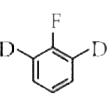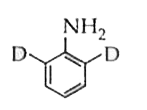Statement-1:Reduction of But-2-yne of Na/liq. NH5 gives trans-But-2-ene.
Statement-2: It is an example of 'anti' addition.
A
Statement-1 is True, Statement-2 is True, Statement-2 is a correct explanation for Statement-1
B
Statement-1 is True, Statement-2 is True, Statement-2 is NOT a correct explanation for Statement-1
C
Statement-1 is True, Statement-2 is False.
D
Statement-1 is False, Statement-2 is True.
Text Solution
The correct Answer is:A
|
Updated on:21/07/2023
Topper's Solved these Questions
Similar Questions
Knowledge Check
- Question 1 - Select One
S-I: Reaction of but-2-yne by Na/liq NH3 gives trans but-2-ene
S-II: It is syn addition.AS-I&II are correct, S-II is correct explanaion of S-IBS-I&II are correct, S-II is not correct explanation of S-ICS-I is true, but S-II is falseDS-I is false, but S-II is true. - Question 2 - Select One
Statement-I:

Statement-II:Birch reduction is anti addition.AIf both statement-1 & statement-2 are true & the statement-II is a correct explanation of the statement-IBIf both statement-I & statement-II are true but statement-II si not a correct explanation of the statement-ICIf statement-I is true but the statement-II is false.DIf statement-I is false but the statement-II is true. - Question 3 - Select One
Treatment of
 with NaNH2/liq.NH3 gives A
with NaNH2/liq.NH3 gives A B
B C
C D
D
The addition of Br2 to ( E)-but-2-ene gives
View SolutionBut-2-yne is reduced to trans-but-2-ene using
View SolutionBut-2-yne is reduced to trans-but-2-ene using
View SolutionAssertion. But-2-yne on reduction with Na/NH3(l) gives trans-2-butene
Reason. To minimise interelectronic repulsions, the addition of electrons occurs on the opposite faces of the triple bond.View SolutionThe addition of Br2 to ( E)-but-2-ene gives
View Solution

